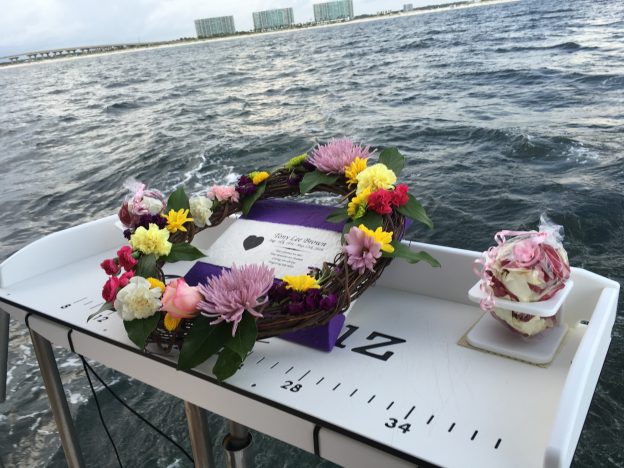I received a very moving email from a regular ‘Letters from the Atlantic’ reader and correspondent this week. Janice lives in the UK and has been a regular visitor to the Canary Islands over the last 47 years with her husband, Bob.
Sadly, Bob died a few weeks ago, shortly after their 47th wedding anniversary, which they celebrated on their favourite Canary Island. Janice and Bob had visited the same island each year since their honeymoon, and in the same fishing village, which they both loved. The couple were true Canary Island lovers and there was only one year that they did not manage a visit, which was shortly after the birth of their son.
Janice told me that Bob had cancer, and it was during their last visit to the island that he had commented in his favourite restaurant that he would like to have his ashes scattered in the sea from the Canarian village that they had visited and enjoyed so much. Bob had remarked that it would be rather like “coming home”. In her email to me, Janice asked if scattering ashes was allowed, since she had read that it was forbidden to scatter human remains in the Canary Islands.
Janice is correct, since it is illegal to scatter ashes on land or sea without obtaining a special licence, yet getting a licence remains a mystery. My enquiries on behalf of Janice at several town halls on the larger islands have led nowhere, so if anyone has further information about the procedure, do please let me know.
There is a potential fine of around 2000 euros if caught scattering human ashes in public places. Despite this restriction, I do know that one of the islands, Tenerife, has a ‘Garden of Ashes’ in La Laguna where ashes can be scattered without a fee, but this facility does not exist on all the islands.
My best advice to Janice is for her to make enquiries with local funeral directors on the island. The other, slightly riskier, alternative is to ask a local fisherman in the village to sail well out of the harbour area and to discretely scatter the ashes whilst out at sea. Surely this can be no worse than some of the pollution that regularly finds its way into the sea?
I know from personal experience that scattering ashes is not always an easy thing to do on these islands, since by their very nature these islands can be very windy and ‘ash blowback’ from a traditional urn can be a highly distressing experience. The best approach is to ask the funeral director to provide a plastic tube that is designed both for plane transportation, as well as for scattering the remains of a loved one, which Janice and her son are planning shortly.
Readers may like to know that human ashes can be carried on an aircraft, although a plastic container should be requested from the funeral director to allow for the container to be easily scanned by airport security.
Although the ashes can be checked in as cargo inside suitcases, it is probably better to include them as part of hand luggage. Do ensure that airport check-in staff know that human remains are being carried. The death certificate of the deceased should also be available, together with any other information given by the funeral director.
Losing a loved one is always a distressing affair, but it can be made easier in the knowledge that we have done our best to meet their wishes. Let us hope that Janice and her son take some comfort by revisiting a place that she and Bob loved so much by “Coming home”.
If you enjoyed this article, take a look at my websites: http://barriemahoney.com and http://thecanaryislander.com or read my latest book, ‘Living in Spain and the Canary Islands’ (ISBN: 9780995602724). Available in paperback, as well as Kindle editions.
Join me on Facebook: @barrie.mahoney
© Barrie Mahoney





